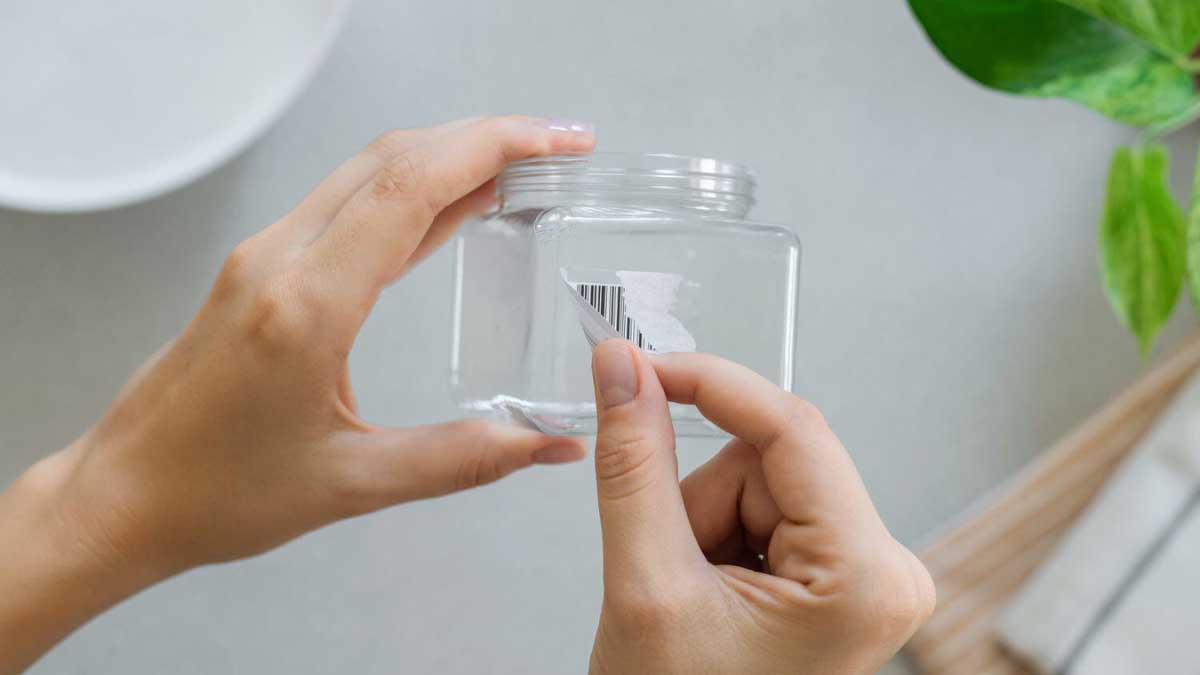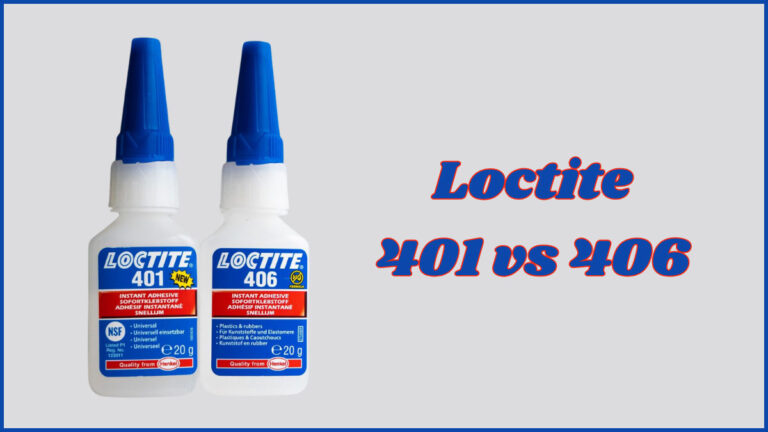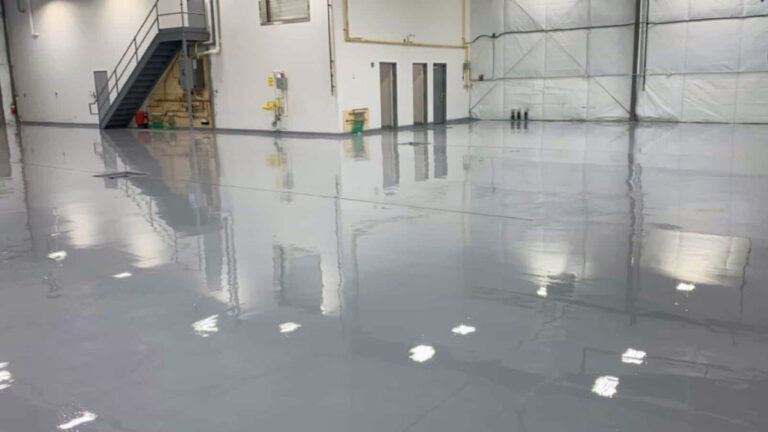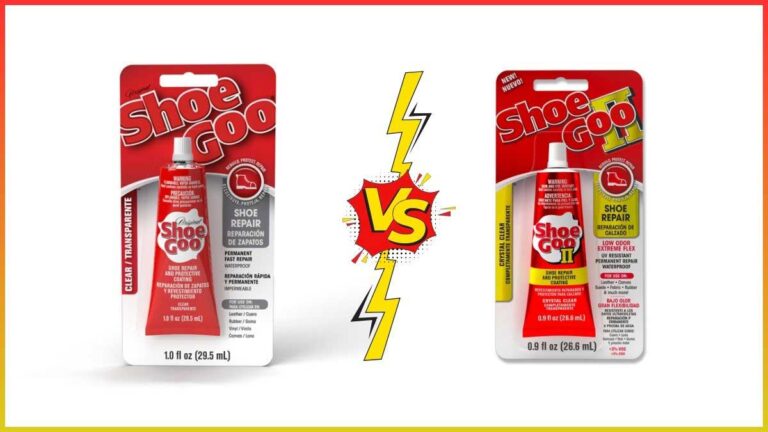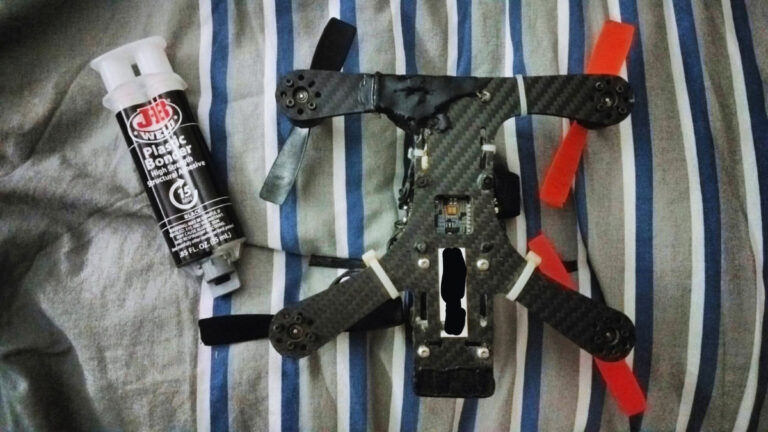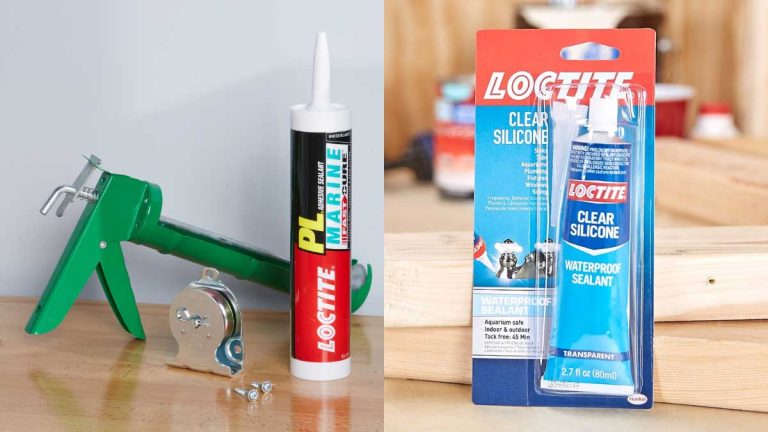How to Get Adhesive off Plastic: Step-by-Step Removal Guide
Struggling to remove stubborn adhesive from plastic surfaces can be frustrating. Whether it’s leftover sticker residue on a new purchase or glue from a DIY project, these sticky situations demand effective solutions. You don’t want to damage the plastic while trying to get it clean, so knowing the right techniques is crucial.
Key Takeaways
- Essential Tools and Cleaning Solutions: Utilize warm soapy water, white vinegar, nail polish remover, rubbing alcohol, or vegetable oil along with lint-free cloths and plastic scraping tools for effective adhesive removal.
- Effective Methods for Removing Adhesive: Techniques such as using a plastic scraper, applying heat, using a soapy water solution, rubbing with alcohol or vodka, and using white vinegar or baking soda paste can effectively remove adhesive from plastic without causing damage.
- Key Tips for Successful Adhesive Removal: Selecting the appropriate method based on the adhesive type and testing on a small area first ensures you won’t damage the plastic. Combine cleaning solutions with gentle scraping or rubbing techniques for best results.
- Preventing Future Adhesive Residue: Choose removable adhesives or washable glues, properly clean and dry surfaces before application, apply adhesive in thin, even layers, and consider alternative solutions like Velcro strips or suction cups to prevent residue build-up.
Essential Tools And Supplies
To effectively remove adhesive from plastic surfaces, having the right tools and supplies ensures a smooth process. Various cleaning solutions, cloths, and scraping tools work together to tackle different types of adhesive residues.
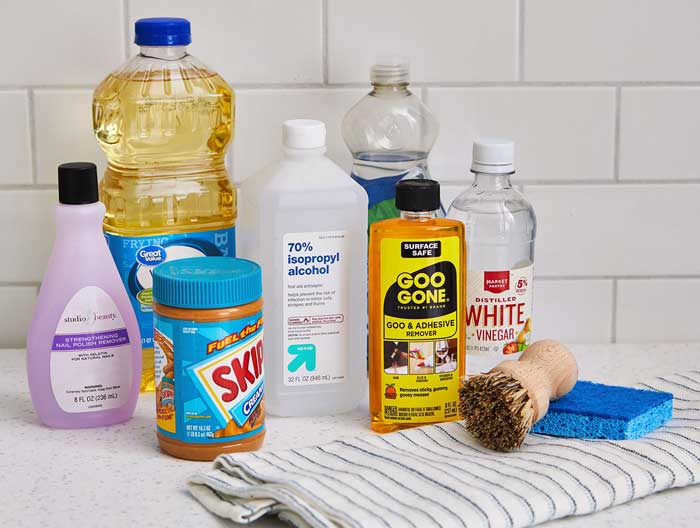
Cleaning Solutions
- Warm Soapy Water: Effective for most adhesive residues, this solution utilizes soap’s surfactants to break down adhesive components.
- White Vinegar: Soaking a cloth in warm water and white vinegar penetrates and softens adhesive, making it easier to wipe away.
- Nail Polish Remover (Acetone): Useful for stubborn residues; but, be cautious as acetone can damage certain plastics.
- Rubbing Alcohol or Vodka: Both can soften and remove adhesive residue. They’re effective on less stubborn adhesives without harming plastic surfaces.
- Vegetable Oil: Particularly effective when combined with heat, vegetable oil breaks down glue residues.
Cloths And Paper Towels
- Clean Cloth or Paper Towel: These are essential for applying cleaning solutions to the adhesive area and wiping away residues. Ensure they are lint-free to avoid additional cleanup.
Scraping Tools
- Plastic Card or Credit Card: Gently scrape away residue without damaging the plastic. The flexibility of the card allows for controlled pressure.
- Pencil Eraser or Rubber Eraser: Rub away stubborn residues without scratching the surface, effective for delicate areas.
Summary Action Point
To efficiently remove adhesive from plastic, select a cleaning solution appropriate for the adhesive type, use a clean cloth or paper towel to apply, and gently scrape with a plastic card or erase using a rubber eraser for stubborn spots. This combination ensures thorough removal without damaging the plastic surface.
Methods To Remove Adhesive From Plastic
Getting adhesive off plastic surfaces can be challenging but manageable with the right tools and techniques. Here’s a guide on several effective methods.
Using A Plastic Scraper
- Tools Needed: A plastic scraper, a dull knife, or a credit card.
- Method: Carefully scrape the adhesive residue with a plastic scraper or dull knife. Avoid scratching the surface by using gentle pressure. This method works well on most types of adhesive residue.
Applying Heat
- Tools Needed: A hair dryer or an ice cube.
- Method: Use a hair dryer to apply heat and soften the adhesive, making it easier to remove with a scraper. Alternatively, freeze the adhesive with an ice cube until it’s stiff and crumbles for easy removal.
Soapy Water Solution
- Tools Needed: Warm soapy water, a cloth.
- Method: Soak a cloth in warm soapy water and place it over the adhesive residue. Let it sit for a few minutes to loosen the adhesive, then wipe it off.
Using Rubbing Alcohol Or Vodka
- Tools Needed: Rubbing alcohol or vodka, cloth.
- Method: Dab a cloth with rubbing alcohol or vodka and gently rub the adhesive. The solvent breaks down the adhesive, making it easier to wipe away without damaging the plastic.
Olive Oil Or Cooking Oil
- Tools Needed: Olive oil or any cooking oil, cotton ball.
- Method: Apply a small amount of oil to a cotton ball and rub it over the adhesive residue. Oils help break down the adhesive bonds, allowing for easy removal.
White Vinegar
- Tools Needed: White vinegar, cloth.
- Method: Soak a cloth in white vinegar and place it over the adhesive. Let it sit for a few minutes, then wipe off the loosened residue.
Baking Soda Paste
- Tools Needed: Baking soda, water, cloth.
- Method: Mix baking soda with a small amount of water to form a paste. Apply the paste to the adhesive and let it sit for a few minutes. Scrub gently with a cloth and rinse off.
- Tools Needed: Commercial adhesive remover, cotton swab.
- Method: Follow the instructions on the adhesive remover product. Typically, you’ll apply it to a cotton swab and rub it on the adhesive until it dissolves.
Action Point: Choose the appropriate method based on the type of adhesive and plastic surface. Test any solution on a small, inconspicuous area first to ensure it doesn’t damage the plastic.
Tips For Effective Removal
To effectively remove adhesive from plastic, there are several techniques and materials you can use. Below, you’ll find a detailed guide, including definitions of key terms and specific steps for each method.
Key Terms
- Adhesive Residue: Sticky substance left behind by stickers, tape, or glue.
- Warm Soapy Water: A mixture of water and a mild detergent.
- White Vinegar: A natural acidic liquid used for cleaning.
- Nail Polish Remover: A solution that often contains acetone, effective at dissolving adhesives.
- Vegetable Oil: A plant-derived oil that can break down adhesive bonds.
- WD40: A commercial product used for lubrication and loosening sticky residues.
- Rubbing Alcohol: An alcohol-based cleaning solution commonly found in households.
- Vodka: A type of alcohol that can also act as a solvent for adhesives.
Warm Soapy Water, White Vinegar, or Nail Polish Remover
- Soak: Soak a cloth in warm soapy water, white vinegar, or nail polish remover.
- Apply: Place the cloth over the sticky area and let it sit for a few minutes.
- Wipe and Scrape: Wipe the area with the cloth, then gently scrape off any remaining residue with a plastic card.
Vegetable Oil or WD40
- Apply: Apply vegetable oil or WD40 to the sticky area.
- Wait: Let it sit for a few minutes to loosen the adhesive.
- Scrub: Remove the residue by scrubbing the area with a paper towel or cloth.
Rubbing Alcohol or Vodka
- Soak: Soak a cloth in rubbing alcohol or vodka.
- Apply: Place the cloth over the adhesive residue.
- Remove: After a few minutes, wipe off the softened adhesive with the cloth.
Comparison of Methods
| Method | Best For | Key Benefit |
|---|---|---|
| Warm Soapy Water/Nail Polish Remover | General-purpose adhesive residue | Easy to use and commonly available |
| Vegetable Oil/WD40 | Stubborn sticker residue on plastic containers | Loosens adhesive effectively |
| Rubbing Alcohol/Vodka | Quick removal of light adhesives | Fast-acting |
Summary
Selecting an appropriate method depends on the type of adhesive and plastic surface. Always test any solution on a small, inconspicuous area first to ensure it doesn’t damage the plastic. By following these tips, you’ll be able to effectively remove adhesive residue without harming your plastic surfaces.
Preventing Future Adhesive Residue
Adhesive residue on plastic can be a persistent issue. To avoid this problem, carry out several preventative measures and ensure clean, residue-free surfaces.
Selection of Adhesives
Choosing the right adhesive reduces residue risks. Here are a few suitable types:
- Removable Adhesives: Designed for easy removal without leaving residue. Examples include Scotch removable tape.
- Washable Glues: Great for DIY projects involving plastic. These glues, such as Elmer’s washable glue, wash off easily without residue.
Surface Preparation
Preparing your plastic surface contributes significantly to preventing adhesive residue. Follow these steps:
- Cleaning: Clean the plastic thoroughly with warm soapy water and allow it to dry. This ensures better adhesive performance and easier removal.
- Drying: Make sure the surface is completely dry before applying any adhesive. Moisture can make adhesives leave more residue.
Application Techniques
Proper application techniques minimize residue. Here’s how to apply adhesives effectively:
- Thin Layer: Apply a thin, even layer of adhesive to avoid excessive buildup.
- Smooth Application: Use a brush or applicator to spread adhesive evenly, preventing blobs that can leave residue.
Alternative Solutions
Using alternatives to traditional adhesives can prevent residue:
- Velcro Strips: For attaching items to plastic surfaces, Velcro strips offer a residue-free solution.
- Suctions Cups: Ideal for hanging objects on smooth plastic surfaces without leaving any sticky residue.
Protective Measures
Carry out protective measures when working with adhesives on plastic:
- Masking Tape: Use masking tape on areas you don’t want adhesive to touch. This creates a barrier that prevents residue on unwanted sections.
- Sealants: Apply a sealant like clear acrylic spray over adhesive-prone areas to provide a protective layer.
| Preventative Measure | Description | Examples |
|---|---|---|
| Removable Adhesives | Easy removal without residue | Scotch removable tape |
| Washable Glues | Wash off easily from plastic | Elmer’s washable glue |
| Cleaning | Clean surface thoroughly before adhesive application | Warm soapy water |
| Drying | Ensure surface is completely dry to minimize residue | Air dry or use a cloth |
| Thin Layer Application | Apply adhesive in thin, even layers to avoid excess | Brushes, applicators |
| Alternative Solutions | Use non-adhesive methods for attaching items to plastic | Velcro strips, suction cups |
| Masking Tape | Prevent adhesive from touching unwanted areas by creating a barrier | Standard masking tape |
| Sealants | Protective layer that allows for easier adhesive removal | Clear acrylic spray, other plastic-safe sealants |
By following these preventative measures, you can maintain plastic surfaces that are free from adhesive residue, ensuring easier maintenance and a cleaner appearance.
Conclusion
Removing adhesive from plastic doesn’t have to be a challenging job. By selecting the right method and tools, you can effectively clean sticky residues without damaging your plastic surfaces. Always test your chosen solution on a small area first to ensure it’s safe for your specific plastic type.
Implementing preventative measures can save you time and effort in the long run. Choose appropriate adhesives and consider alternative solutions like Velcro strips or suction cups to avoid sticky situations altogether. With these strategies, maintaining residue-free plastic surfaces becomes a breeze.
Frequently Asked Questions
Will rubbing alcohol damage plastic?
Rubbing alcohol (isopropyl alcohol) is generally safe for most plastics. However, it’s advisable to test it on a small, inconspicuous area first to ensure it won’t cause any damage. Avoid prolonged exposure, as it might affect certain types of plastics over time.
How do I remove adhesive without damaging plastic?
You can use a mixture of warm water, white vinegar, and mild dish soap. Soak a clean cloth or paper towel in the solution and rub it over the adhesive. Let it sit for five minutes, then remove the towel and gently scrape away the residue.
What is the best adhesive remover for plastic?
Rubbing alcohol and vodka are among the most effective solvents for removing adhesive from plastic. They are safe for most surfaces and do a great job at dissolving sticky residues like tape or glue.
How do you get sticky label residue off plastic?
To remove sticky label residue, you can use warm soapy water, white vinegar, or nail polish remover. Apply the solution to the residue, let it sit for a few minutes, then wipe the area with a cloth.
How to remove stickiness from old plastic?
Rub the sticky plastic surface with rubbing alcohol. Hold the item securely and apply the alcohol all over the surface, turning as needed to reach all sides. This will help clean and remove the sticky residue.

